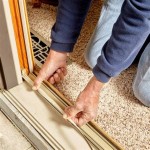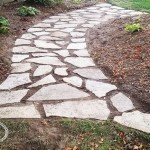Filling Cracks In Concrete Patio
Concrete patios are a popular choice for outdoor living spaces. They are durable, easy to maintain, and can be customized to match any style. However, concrete is not impervious to damage, and cracks can develop over time due to factors such as settling, temperature changes, and wear and tear. While small cracks may not be a major concern, larger cracks can compromise the structural integrity of the patio and allow water and debris to penetrate, leading to further damage. Therefore, it is important to repair cracks in concrete patios as soon as they appear.
Filling cracks in concrete patios is a relatively simple and inexpensive repair that can be done by do-it-yourselfers with the right tools and materials. The first step is to clean the crack thoroughly with a wire brush or power washer. This will remove any dirt, debris, or loose concrete that could prevent the filler from adhering properly. Once the crack is clean, it should be dry before proceeding with the repair.
There are a variety of different materials that can be used to fill cracks in concrete patios, including concrete caulk, epoxy, and hydraulic cement. Concrete caulk is a flexible sealant that is easy to apply and can be used to fill small cracks. Epoxy is a stronger adhesive that is ideal for filling larger cracks. Hydraulic cement is a fast-setting material that can be used to fill cracks in wet or underwater conditions.
When choosing a filler, it is important to consider the size and location of the crack, as well as the amount of traffic the patio will receive. For small cracks, a concrete caulk or epoxy will be sufficient. For larger cracks, a hydraulic cement is a better choice. If the crack is in an area that receives a lot of traffic, it is important to choose a filler that is durable and resistant to wear and tear.
Once the filler has been selected, it can be applied to the crack using a putty knife or trowel. The filler should be applied in a thin layer and worked into the crack until it is level with the surrounding concrete. Once the filler has been applied, it should be allowed to cure according to the manufacturer's instructions. Curing times will vary depending on the type of filler used.
Once the filler has cured, the crack should be sealed with a concrete sealer. This will help to protect the filler from the elements and prevent water and debris from penetrating the crack. Concrete sealers are available in a variety of finishes, so it is important to choose one that matches the finish of the surrounding concrete.
Filling cracks in concrete patios is a relatively simple and inexpensive repair that can help to protect the patio from further damage and improve its appearance. By following the steps outlined above, you can easily fill cracks in your concrete patio and restore it to its original condition.

5 Ways To Fix Cracked Or Damaged Concrete Patio Cricket Pavers

How To Fix Cracked Concrete Putting Two Methods The Test Renee Renovates

How To Fix Cracks In Concrete

How To Fix Cracks Crumbles And Breaks In Concrete Dap Global

Patio Concrete Crack Repair Youtube

Concrete Crack Repair Guide How To Fix Cracks In Slabs Network

Dap Concrete Crack Filler Global

How To Fix Cracks In Any Concrete Sidewalk Or Driveway Like A Pro Diy Step By Guide Youtube

Concrete Crack Repair How To Fix Cracks In

Easy Way To Fill Cracks In Concrete Using Consandtrate








